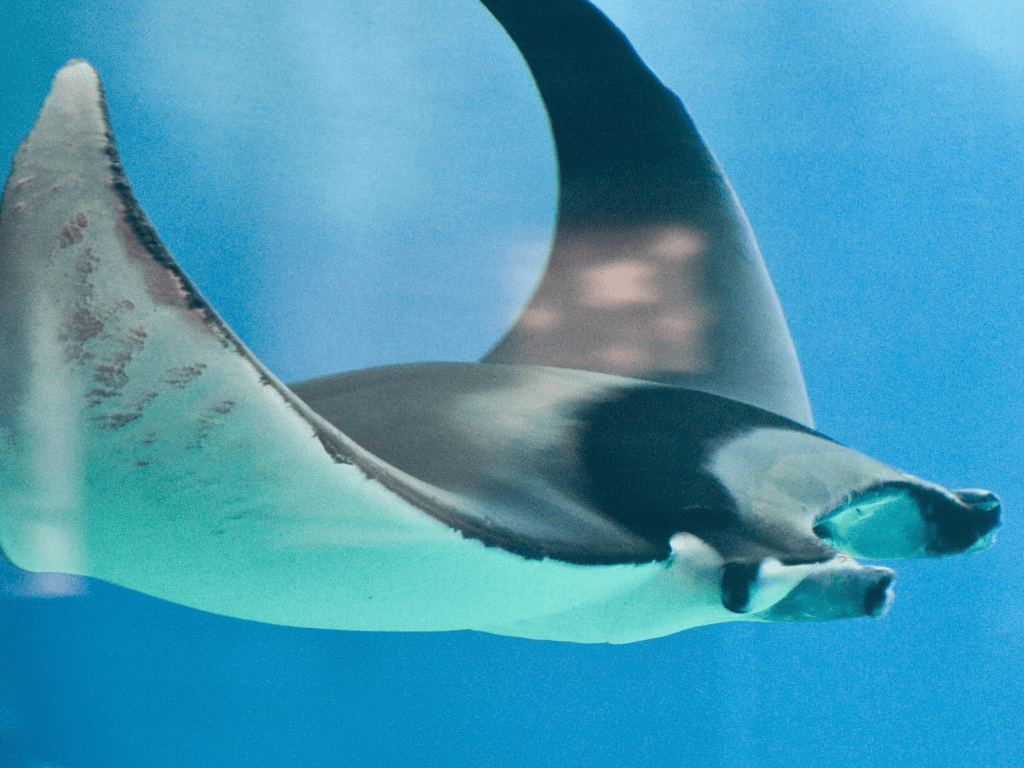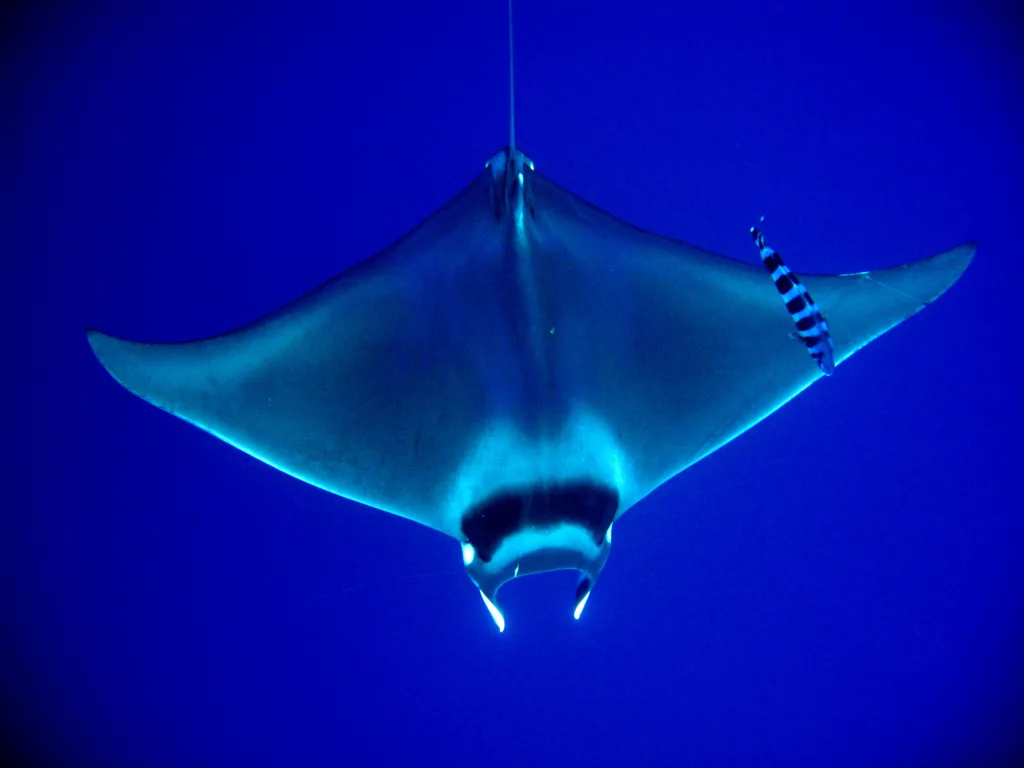Devil Fish: The Devil Fish also known as Giant Devil Ray is a species of ray. Scientifically Devil fish is referred as Mobula mobular. The giant radius of the Giant Devil Ray is one of the largest elasmobranchs, with a maximum disc width greater than 4.5m and a weight that may exceed 1.5 tonnes. Taxonomically, it can be confused with the devil ray Mobula japanica, a circumtropical species found in the tropical and temperate North Atlantic but not the Mediterranean.
Table of Contents
Habitat
Devil fish are more common in the Mediterranean Sea and can be found elsewhere in the Eastern Atlantic Ocean, off the southwest coast of Ireland and south of Portugal and in the northwest Atlantic. Species has been recorded in a number of Mediterranean countries such as Croatia, Greece, Italy, and Turkey. These rays are often solitary and travel alone, but most species exhibit aggregation and shoal behavior associated with feeding and reproduction.
Giant rays aggregate in the Mediterranean between late spring and summer, with evidence suggesting they perform a north-south migration. within that body of water in terms of water temperature and productivity. It exhibits ovoviparity in which the embryos first feed on the yolk and then receive additional nourishment from the mother through indirect absorption of uterine fluid enriched with mucus, fat, or protein through specialized structures.

Endangered, A4d Status in the IUCN Red List
Low reproductive potential common to all mobulidae also makes these rays vulnerable to fishing. The conservation status of The Giant Ray has been assessed as “Endangered, A4d“ in the IUCN Red List due to Bycatch Mortality. These rays are often solitary and travel alone, but most species exhibit aggregation and shoal behavior associated with feeding and reproduction. Giant rays aggregate in the Mediterranean between late spring and summer, with evidence suggesting they perform a north-south migration. within that body of water in terms of water temperature and productivity.
Also Read about Animal with largest and heaviest brain
Ecology
The average lifespan of a giant devil ray is 20 years. It exhibits ovoviparity in which the embryos first feed on the yolk and then receive additional nourishment from the mother through indirect absorption of uterine fluid enriched with mucus, fat, or protein through specialized structures. It has a very low reproductive capacity and it gives birth to a single offspring at an interval that is not fixed. Species feed on Plankton crustaceans ( diverse collection of organisms found in water that are unable to propel themselves against a current) and small schooling fish. It mostly eats euphausiid shrimp and small mesopelagic and clupeid fishes.

Why Devil Fish is named Devil ?
The devilfish has a head with cephalic flaps, when these flaps are curled up they look like horns, giving the animal a “devil-like” silhouette.
What does a Devil Fish Look Like?
Manta Ray or Mobula Ray, which are often called “Devil Rays.” have a distinct appearance. Here are some characteristics that describe how they look:
- Body Shape: They have large, flat bodies that are triangular or diamond-shaped. Their bodies are wider than they are long, resembling the shape of wings.
- Size: Manta Rays and Mobula Rays are among the largest rays in the ocean. Depending on the species, their wingspan can range from 10 to 30 feet (3 to 9 meters) or more, making them quite impressive in size.
- Coloration: They often have a dark-colored or blackish upper surface, while the underside is usually lighter in color, ranging from white to light gray.
- Pectoral Fins: Their most distinctive feature is their large, triangular pectoral fins that are reminiscent of wings. These fins enable them to glide gracefully through the water.
- Mouth and Gill Slits: Manta Rays and Mobula Rays have a wide mouth located on the front side of their bodies. They also have several gill slits on the undersides of their bodies through which they filter out plankton and small fish.
- Tail: Their tails are usually long and thin, lacking the venomous spines found in some other ray species.
It’s worth noting that different species within the Manta Ray and Mobula Ray families have variations in color patterns and body features.
Read more about Devil fish
FAQs about Devil Fish:
What is a Devil Fish?
The Devil Fish, also known as the Manta Ray (scientific name: Mobula), is a species of large rays found in warm and temperate waters around the world. They are known for their distinctive body shape, with broad pectoral fins resembling wings.
How big do Devil Fish get?
Devil Fish can vary in size, with the average wingspan ranging from 10 to 20 feet (3 to 6 meters). However, some larger species can reach a wingspan of up to 30 feet (9 meters) or more.
What do Devil Fish eat?
Devil Fish primarily feed on plankton and small fish. They have a unique feeding mechanism where they swim through dense schools of prey, filtering out food using their specialized gill rakers.
Are Devil Fish dangerous to humans?
Devil Fish are generally harmless to humans. They are not aggressive and pose no significant threat unless provoked or cornered. However, their size and powerful tails mean it’s advisable to maintain a respectful distance when encountering them in the wild.
Where can Devil Fish be found?
Devil Fish can be found in tropical and subtropical oceans worldwide. They prefer warm waters and can often be seen near coral reefs, in shallow coastal areas, or during seasonal migrations.
Are Devil Fish endangered?
Some species of Devil Fish are considered vulnerable or endangered due to overfishing, habitat degradation, and accidental capture in fishing nets. Conservation efforts are in place to protect and preserve these magnificent creatures.
Can Devil Fish be kept in captivity?
Keeping Devil Fish in captivity is challenging due to their large size and specific habitat requirements. However, some public aquariums with suitable facilities and resources may house them to educate the public about these fascinating marine animals.
Are Devil Fish related to sharks?
Devil Fish and sharks belong to the same class of cartilaginous fish called Chondrichthyes. However, they are not closely related. Devil Fish are classified under the subclass Elasmobranchii, which includes rays and skates, while sharks belong to the subclass Selachii.
Can Devil Fish fly?
Despite their wing-like pectoral fins, Devil Fish cannot fly in the air like birds or bats. However, they are capable of leaping out of the water and performing impressive acrobatic maneuvers, sometimes referred to as “flying” or “breaching.”
Can Devil Fish sting?
Devil Fish do not possess a venomous sting like some other species of rays. While their tail may have a spine, it is primarily used for defense and not for delivering venom.
What is Pagi fish?
“Pagi Fish” is a term commonly used to refer to stingrays or specific species of rays in certain regions. Stingrays are a type of ray characterized by their flattened bodies and long, whip-like tails that often have venomous spines. They are found in both freshwater and saltwater environments around the world, including oceans, rivers, and estuaries.
Stingrays are known for their unique wing-like pectoral fins that they use to glide through the water. They have a diverse diet, feeding primarily on small fish, crustaceans, and mollusks. Stingrays are generally not aggressive towards humans, but caution should be exercised to avoid stepping on them or disturbing them in their natural habitat.


